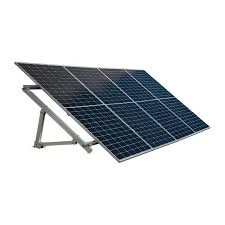3kva inverter
Understanding the 3 kVA Inverter A Comprehensive Overview
In our modern world, the demand for reliable and sustainable energy sources has never been more critical. One of the key components that facilitate this energy transition is the inverter. Among various types available in the market, the 3 kVA inverter has gained significant traction due to its balanced power output and versatility. This article delves into the features, benefits, and applications of the 3 kVA inverter, providing a comprehensive overview for those considering this essential device.
What is a 3 kVA Inverter?
A 3 kVA inverter is an electrical device that converts direct current (DC) into alternating current (AC) with a power output capacity of up to 3 kilovolt-amperes (kVA). This capacity makes it suitable for various applications ranging from residential use to small commercial setups. The inverter plays a crucial role in systems like solar power setups, uninterruptible power supplies (UPS), and other renewable energy sources.
Key Features
One of the main features of a 3 kVA inverter is its efficiency. Many models operate at efficiencies exceeding 90%, allowing for minimal energy loss during the conversion process. Additionally, these inverters come equipped with multiple input options, making them compatible with various renewable energy sources, such as solar panels and wind turbines.
Moreover, modern 3 kVA inverters incorporate advanced technologies such as Maximum Power Point Tracking (MPPT), which optimizes the energy harvest from solar panels. Many models are also equipped with battery management systems (BMS), ensuring the longevity and safety of batteries connected to the inverter.
Benefits
3kva inverter

The advantages of using a 3 kVA inverter are numerous. Firstly, its capacity makes it ideal for powering household appliances, including refrigerators, air conditioners, lights, and other essential devices during blackouts or in off-grid scenarios. This reliability provides peace of mind to users, especially in regions prone to power outages.
Additionally, the inverter's size and power handling capability make it a cost-effective choice for small business owners who may not require a larger, more expensive inverter setup. By using a 3 kVA inverter, businesses can reduce operational costs and ensure a steady supply of power for essential equipment.
Applications
The versatility of the 3 kVA inverter allows it to be used in various applications. In residential settings, it can be used as part of a solar energy system, enabling homeowners to harness solar power effectively and reduce their electricity bills. Furthermore, businesses can utilize these inverters for backup power solutions, ensuring uninterrupted operations during emergencies.
In the agricultural sector, a 3 kVA inverter can power irrigation systems and other essential machinery, thereby enhancing productivity. It is also useful in remote areas where the power grid is unreliable or non-existent, providing a sustainable energy solution for essential services.
Conclusion
The 3 kVA inverter stands out as a reliable and efficient power solution for both residential and commercial applications. Its ability to convert DC to AC with minimal loss, along with its adaptability to various energy sources, makes it an indispensable asset in today’s energy landscape. As we move toward a more sustainable future, integrating devices like the 3 kVA inverter into our energy systems will play a pivotal role in achieving energy independence and resilience.
-
Navigating Off Grid Solar Inverter: From Use Cases to Trusted PartnersNewsAug.05,2025
-
Solar Edge String Inverter: A Wholesaler’s Guide to Inverter Technology SelectionNewsAug.05,2025
-
Microinverters: Revolutionizing Solar Energy UseNewsAug.05,2025
-
Future of Monocrystalline Solar Panel Efficiency: Latest Technological AdvancesNewsAug.05,2025
-
Solar Panels for House: A Complete Guide to Residential Solar EnergyNewsAug.05,2025
-
Panel Bifacial Performance in Snow and Low-Light ConditionsNewsAug.05,2025







